Ryan Hall's Blog, page 122
October 5, 2017
How To Watch The 2017 Chicago Marathon
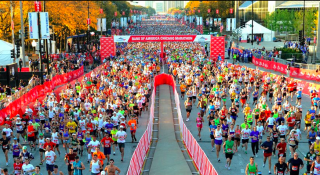
Photo: Chicago Marathon Facebook
The Chicago Marathon takes place on Sunday, Oct. 8. The first wave of runners will start at 8:30 a.m. EST. Known for its flat-and-fast course, there should be some speedy times and great races to look forward to.
How To Watch
In the United States, the Chicago Marathon will be shown live on NBCSN and their streaming service NBC Sports Gold. Coverage starts at 8:00 a.m. EST on NBCSN. If you don’t have cable, NBC Sports Gold is a subscription-based service, available for $69.99 for the entire track and field season.
The local Chicago NBC affiliate is also providing coverage. NBC 5 and the NBC Chicago app will offer a live stream beginning at 8 a.m. EST online and on-air. The coverage will continue until 12 p.m. EST on TV. A live finish line camera will stream until 3:30 p.m. EST on the NBC Chicago app and website. Telemundo Chicago will also be providing coverage starting at 8 a.m. EST. If you’re not in the area, nbcchicago.com and telemundochicago.com will be showing the race all day.
Spectators following along at home or on the course can track individual runners with the Bank of America Chicago Marathon Mobile App. You can track up to 20 runners. The app is available on the App Store and Google Play.
Why Should You Watch?
Two runners: Jordan Hasay and Galen Rupp. Both of these talented Americans have a chance to win their respective races. The last American man to win Chicago was Khalid Khannouchi in 2002. Deena Kastor was the women’s champion in 2005.
A tough international field won’t make it easy for these runners to cruise to victory. On the woman’s side, 2015 and 2016 winner Florence Kiplagat is back to defend her title. She’s joined by Tirunesh Dibaba, who has run the third fastest marathon time ever. In the men’s race, last year’s champion Abel Kirui is running again. He’s one of six runners in the men’s race who have run under 2:07.
Want to know more about this year’s race? Check out five things you should know about the 2017 Chicago Marathon.
RELATED: Joan Benoit Samuelson Withdraws From 2017 Chicago Marathon
The post How To Watch The 2017 Chicago Marathon appeared first on Competitor.com.
Which Training Plan Is The Right One For You?
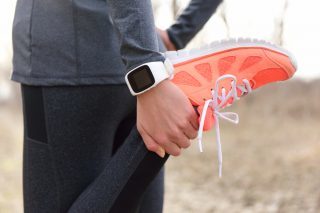
It can be intimidating to start running, especially if you’re not sure which training program to choose. These five plans offer something different to each runner. Here’s what you need to know.
Couch to 5K
This beginner program promises to take the non-runner from 0 to 3.1 miles in just nine weeks. The program calls for three workouts per week for about 20-30 minutes each.
By starting slow and not building too fast, this training program tries to strike the right balance between motivation and progress. It cautions against skipping ahead if you feel the workouts are too easy. You can also choose to measure your workouts by either time or distance.
The first workout calls for repeats of 60 seconds of jogging, followed by 90 seconds of walking for a total of 20 minutes, not including a warmup walk. By the end of week five, you’re running for 2 miles or 20 minutes without walking.
An accompanying mobile app ($3 on iTunes and Google Play) keeps track of your workouts using your phone’s GPS and includes voice commands to tell you when to walk or run.
RELATED: Couch-To-5K Apps To Get You Up And Running
Jeff Galloway’s Run/Walk
This program flips the switch on the idea that runners are only meant to run. Instead it provides a walk break ratio for all runners—from beginners to advanced. The idea is taking strategic walk breaks provides quicker recovery, better control over fatigue, reduced injury risk and improved finish times.
Galloway’s website says shifting from non-stop running to strategic walk breaks results in an average of a 7-minute faster half marathon and 13-minute faster marathon. The site includes training programs for every race from a 5K to a full marathon, with lots of tips along the way.
A calculator on the site helps you figure out your own personal walk-break ratio. It also helps define where your training and race paces would be based on a one-mile trial run.
There are a number of training apps under Galloway’s name for various distances run. They cost anywhere from $4 to $20 in the App Store. Galloway also offers individual training programs for all distances at a cost of $397 for new registrants or $277 for alumni of the training program.
RELATED: Jeff Galloway’s Race Recovery Tips
McMillan Training
Enter a recent time of a race or even just a fast mile and McMillan’s calculator will spit out predictions for other distances, as well as training paces for everything from easy runs to long runs and tempos to intervals. It also provides heart rate targets if that’s something you keep track of.
That’s all free. For an additional fee starting at $80, you can purchase a customized program for various race distances. The site also offers personal coaching for the cost of $199 per month for 12 months.
80/20 Rule
Based on accompanying book by Matt Fitzgerald, the idea of this training plan is that most runners do too many workouts in the moderate-to-intense range without even realizing it.
Instead, 80/20 calls for you to slow down so about 80 percent of your runs are at an easy pace. Meanwhile 20 percent of runs are faster, moderate-to-high intensity rate. Using evidence from studies and elite runners, Fitzgerald says running 80 percent of your runs at a slower pace will make you faster come race day.
So how do you determine what pace you should run with this program? You have to go based on heart rate or perceived exertion, which you can figure out based on your breathing.
The program calls for up to six or even seven runs a week. Moderate or high-intensity runs never falling on back to back days.
Hansons Marathon Method
Hansons Marathon Method does not believe in long runs over 20 miles or high-mileage weekends. Instead, they encourage runners to gradually build up to the moderate-high mileage required for marathon success, spreading those miles more sensibly throughout the week. Easy days are mixed with speed, strength, and tempo workouts.
Whether you’re training for your first or 50th marathon, this book has a training plan for every runner. The new edition features a “Just Finish” training plan for those who want to complete 26.2 but don’t have a strict time goal. There are also detailed training schedules for experienced and advanced marathoners.
RELATED: Are You Making These Marathon Training Mistakes
The post Which Training Plan Is The Right One For You? appeared first on Competitor.com.
October 4, 2017
9 Runners Share Their All-Time Favorite Pair Of Running Shoes
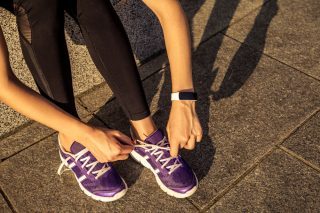 We asked and you responded…What is your favorite pair of running shoes ever?
We asked and you responded…What is your favorite pair of running shoes ever?“Altra Torins for women because I like a shoe that protects yet lets me feel the ground. No plantar issues either. Great toe-box for my wide feet. I usually wear men’s.” —Amy K.
“New Balance 5000 racing shoes. You feel like you are flying in them.” —Camelia M.
RELATED: The Secret To Pairing Your Training Shoes And Racing Shoes
“Hoka One One Challenger 3 for trail and road usage. Plus, they fit my feet perfectly and have great traction on sketchy conditions.” —Dave M.
“Nike Air Waffle Trainers, circa 1980, 1981. As a kid, I never had name-brand sneakers. When I joined cross country going into 10th grade, we got a free pair. They were blue with the yellow swoosh. They were great and I was so excited to have a pair. I wore them out!” —Mary Beth G.
“I have run in Adidas Supernovas for over 15 years. Adidas changed up the fit about five years ago and I stopped wearing them as much until they switched to the Boost soles. Now I won’t run in anything but Adidas Supernova Boosts.” —David Z.
“Favorite ever? ASICS Gel-Blur 2.0. Made as if they were made just for me, perfect ride.” —Chris T.
“All of my PRs have been run in the On Cloudsurfer model.” —Justin A.
RELATED: Do The Shoes You Wear While Not Running Matter?
“Saucony Hurricane 17s. They were purple. They are retired now, but instead of throwing them out, I have kept them as a reminder. They were the shoes I put on when I ran my very first time after cancer surgery. I was so unsure of myself and my abilities after being sidelined. Those shoes got me through the slowest 3K I have ever done. But it was the best run of my life. I’ll never forget being grateful for the power of movement.” —Gail P.
“Newton, Newton, Newton! Comfortable right out of the box whether I’m on the road or on the trails. Got them for my first Ironman and haven’t looked back!” —Julie H.
The post 9 Runners Share Their All-Time Favorite Pair Of Running Shoes appeared first on Competitor.com.
Joan Benoit Samuelson Withdraws From 2017 Chicago Marathon
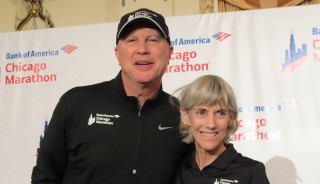
Joan Benoit Samuelson (right) and race director Carey Pinkowski in advance of the 2015 Chicago Marathon (Photo: David Monti/Race Results Weekly)
Joan Benoit Samuelson announced today that she is withdrawing from the Bank of America Chicago Marathon due to training setbacks as a result of an injury. She had originally entered the race to chase the 60-and-over marathon world record. Samuelson, 60, was targeting a sub-3-hour marathon. Bernardine Portenski of New Zealand set the current world record mark of 3:01:30 in 2010.
“October 8 has been on my calendar for some time, but I need to put my goals and my story on hold for now,” said Samuelson in a statement. “Chicago holds a special place in my career, and while I cannot compete this year, I am looking forward to cheering on thousands of runners as they chase their goals and tell their stories on race day.”
Samuelson is the 1984 Olympic Marathon champion. She won the Chicago Marathon in 1985. Despite withdrawing, she will still be in Chicago to celebrate the race’s 40th anniversary.
“Joan is a champion, and while we would love to celebrate a new record and career milestone with her, we are looking forward to having her here in Chicago to cheer on more than 40,000 runners,” said Carey Pinkowski, Chicago Marathon Executive Race Director.
RELATED: 5 Things To Know About The Chicago Marathon
The post Joan Benoit Samuelson Withdraws From 2017 Chicago Marathon appeared first on Competitor.com.
5 Pieces Of Special Edition Chicago Marathon Gear
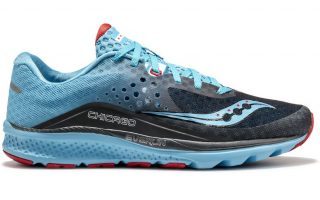
With all the training and effort invested in a momentous event like the Chicago Marathon, participants feel the need to commemorate it with more than the post-race labored stride and finisher’s medal. That’s where special edition shoes and apparel come into play, allowing runners to show off their accomplishment the way a varsity athlete sports a letter jacket. Check out what brands are putting out for this year’s Chicago Marathon.
RELATED: 5 Things To Know About The 2017 Chicago Marathon


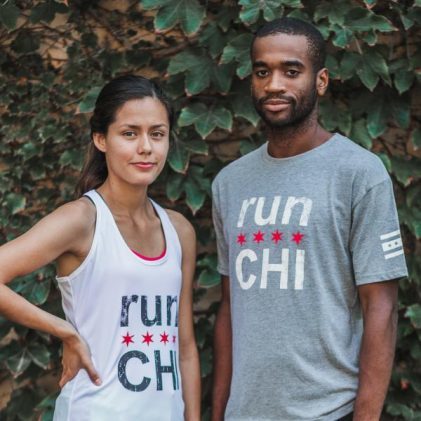

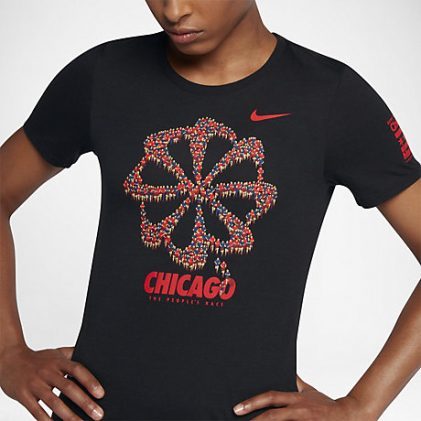
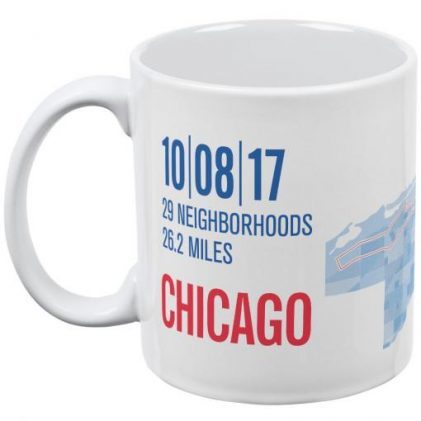
The post 5 Pieces Of Special Edition Chicago Marathon Gear appeared first on Competitor.com.
Where To Run While Visiting New Orleans

Photo: Shutterstock

If you’re heading to New Orleans, it’s probably to have fun. But that doesn’t mean you should neglect your training while visiting the city. The best way to get to know New Orleans is by running through it. There are a variety of places to run, both in the city and in the surrounding area.
Running in the Center of the City
Here are some suggestions on where to go for a run if you want to embrace everything that New Orleans has to offer.
The French Quarter: While possibly the most scenic route, don’t expect major mileage and plan to dodge people and cars.
The median on St. Charles Avenue: The median, a sandy grassy strip between streetcar tracks, was not designed as an official place to run, but it is an extremely popular option for runners and walkers alike. This route runs for several miles while passing some of the area’s most notable mansions. Just keep your eyes open for the streetcars!

Away from the crowds
Want to get away from the hustle and bustle? Try these running routes.
City Park: This park has so many options for runners. Want to do a track workout? The City Park Track, which was built for the 1992 Olympic Trials, is a 400-meter polyurethane track open to both walkers and runners. The one-mile Festival Grounds path and the three-quarter mile path around Big Lake path are easily accessible and provide great scenery on the run. Additionally, Couturie Forest offers lots of trail options in a quiet forest.
The Lakefront: Lakeshore Drive runs along Lake Pontchartrain. It offers runners views of the lake as they run. The path follows a series of small parks and beaches along the shore of the lake.
 Photo: St. Tammy Parish Facebook
Photo: St. Tammy Parish Facebook
Where to Go for Major Mileage
Levee Path: Also known as the Mississippi River Trail, this 22-mile paved path on top of the levee allows runners to avoid traffic and intersections. The path starts at The Fly and winds through Kenner and the River Parishes.
Tammany Trace: This 27-mile “rails to trails” offers a flat, paved surface with a good bit of shade. There are five different entrances with different amenities available at each, including Abita Brew Pub at the Abita Springs trailhead, so plan accordingly!
New Orleans is an amazing city to visit. The food is unique, the alcohol flows freely, and the culture is wonderful to see. Now when you go for that visit, you don’t have to take a break from your training plan!
RELATED: 5 Tips For Getting In A Run While Away From Home
The post Where To Run While Visiting New Orleans appeared first on Competitor.com.
World-Class Weekend
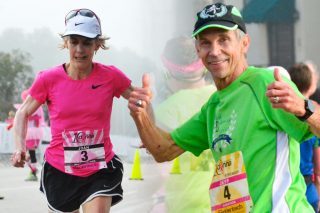
Find out why two Olympians head to Florida every February.
Every year during the second weekend of February, you’ll find Olympians Joan Benoit Samuelson and Jeff Galloway in Northeast Florida. The gold medalist and the 10-mile road race record holder are far from alone in their annual getaway; they are joined by over 10,000 runners from all 50 states and 20 countries for a world-class race experience to finish breast cancer.
The DONNA Marathon Weekend—with its 11th annual event taking place February 9-11—features a 5K, 10K, relay, half marathon, marathon, ultramarathon and event challenges along the Florida coast. The flat-and-fast Boston-qualifying course—paired with race day temperatures in the mid-50s—draws runners back year after year for a 26-mile beach block party with scenic views and an outpouring of crowd support.
“It’s an uplifting event that energizes people regardless of their health status,” says Joan Benoit Samuelson. “The camaraderie exhibited by the participants is palpable. The inspiring stories that are shared during race weekend should be bottled and shared with breast cancer patients. We are all in this together to finish breast cancer.”
When you’re not meeting Samuelson and Galloway at the race expo or racing through the four beautiful beach communities that comprise the course, you can be basking in the mild winter weather that makes Florida an ideal relaxing outdoor paradise. Spend your afternoon walking along the miles of pristine beaches while searching the coastline for signs of the calving Northern Right Whales. Set your alarm for an early tee time and play on one of the dozens of Championship golf courses, capped off by a visit to the World Golf Hall of Fame. Explore the history of the nation’s oldest city, St. Augustine, by visiting more than 60 historic sites and attractions. Don’t forget your final pre-race shake out run, that can be done on scenic byways that are a favorite training ground for local athletes.
Runners who follow the Galloway run-walk-run method are in for a special treat, as the DONNA Marathon Weekend offers official Galloway pacers powered by Momentum Transportation USA for both the marathon and half marathon. Whether you are trying to qualify for your first—or 10th—Boston Marathon or will be crossing the finish line of your first half marathon, you’ll get support from both pacers and huge crowds that line the streets to cheer on runners from start to finish.
“I love the way the course weaves through a series of interesting beach communities with numerous views of the beach,” says Jeff Galloway. “The weekend activities are all upbeat and fun… beginners are supported with run-walk-run pace groups and experienced runners have a fast course to improve time.”
Founded in 2008 by three-time breast cancer survivor Donna Deegan, what started as a marathon has grown into a world-class racing experience by runners, for runners. The DONNA Marathon Weekend is all about supporting, celebrating and empowering women from all over the world who are living with—or are in remission from—breast cancer. Once you are a part of the community—whether you are a first-timer or an Olympian—you are forever a part of the history of the National Marathon to Finish Breast Cancer. Register today.
The post World-Class Weekend appeared first on Competitor.com.
October 3, 2017
5 Expert Tips To Have Your Best Race In Costume Ever
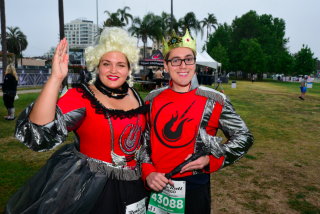
Photo: Courtesy of Rock 'n' Roll Marathon Series
Looking back, John Biel considers the very first time he ran in costume a bit of an amateur affair. He dressed as one of the little green aliens from “Toy Story.” It may have been simple—“but I was super proud of it at the time,” he says.
Since then, Biel has run more than 30 races in costume. A TourPass holder for the Rock ‘n’ Roll Marathon Series, Biel was a giant taco at Arizona and a loaf of sourdough in San Francisco. He’s also done a number of partner costumes with his friend Sarah Lupien. (They were dressed as “the longest walk of shame ever” at Rock ‘n’ Roll Las Vegas.)
For Biel, it’s a creative outlet and a way to make running more fun and interesting. He even took a children’s sewing class a couple of years ago. “There is no right way to run a race,” he points out.
RELATED: The Best Halloween Costumes For Your Next October Race
Fernando Landeros opts for hilarity over technical execution. The official “Costume Contest” winner at the 2015 Rock ‘n’ Roll Los Angeles Half Marathon always keeps it interesting. His award-winning costume was supposed to be a clichéd female opera singer. But people thought he was a “sexy Viking,” so he went with it.
There are some challenges to costumed racing. “It can get tiring,” says Landeros, especially since he also runs with a boom box or speakers. And you might have to deal with unexpected hurdles. Landeros learned the hard way that leather makes for a tough run. And Biel found out foam can be (unfortunately) quite insulating on hot days. But neither has abandoned a costume.
Once they’re gussied up, it’s all about running their own personal race in character and getting that one-of-a-kind finish photo.
Pick Your Poison
“The hardest part of the entire process is coming up with an idea,” says Biel. “I love to make the costume fit the theme of the race or city.” In Chicago, he was dressed as a giant bag of famous Garrett Chicago mix popcorn. And for the anniversary of Rock ‘n’ Roll San Diego, he and Lupien dressed up as the King and Queen of Rock ‘n’ Roll (above).
Landeros collects odds and ends from Goodwill and old costume stores and lets inspiration strike. He’s been Super Mario, a cowboy, a regular office worker and Richard Simmons.
RELATED: Top 10 Most Magical Disney Running Costumes
“Whatever you do, have fun. Pick something you’re passionate about,” says Biel. “And if your costume isn’t coming together, don’t be afraid to walk away from that idea. It’s better to have a few top-notch costumes each year and have fun.”
Hot Tips (No Chafing Needed)
Use inspiration from your interests or the race’s website.
Do a test run of your costume (and disregard strange looks).
Train! “Make sure your training is there,” says Biel, so you’ll know you can finish.
Friends make it more fun and expand the costume possibilities.
Commit to the character. “Once you put it on, you have to figure out a way to own it,” says Landeros.
The post 5 Expert Tips To Have Your Best Race In Costume Ever appeared first on Competitor.com.
Does Sugar Deserve Such A Bad Reputation?
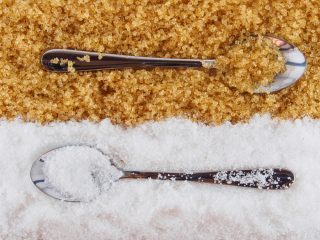

Should we really be so sour on sweets? In a word, no. But let me explain. There are two categories of sugars. Natural sugars occur in foods we consume, and include fructose (found in fruits) and lactose (in milk and dairy products). Added sugars, on the other hand, are included after the fact by the manufacturer. These include cane juice, sucrose and high-fructose corn syrup (an inexpensive sweetener made from cornstarch), which is included in packaged crackers and condiments. It could also mean sugars we add ourselves—like that dollop of honey in your oatmeal or the sugar in your tea. It’s added—not natural sugar—that’s cause for concern.
So what’s the difference between sugars from different sources? Sugar, in all forms, is a simple carbohydrate that our bodies can use for energy. Any sugar we eat—fruit, honey, candy or sports drink—will be rapidly available for use by working muscles if consumed just prior to or during exercise—and in appropriate amounts. Whether the sugar was from honey or candy, once it enters the small intestine, it gets broken down into the simplest form of absorbable sugar—glucose. Refi ned/ processed sugars contain a higher concentration of fructose, which is rapidly processed in the liver to triglycerides, leading to an increased triglyceride level and decreased HDL (“good” cholesterol). On the contrary, foods high in natural sugar generally contain fi ber—which slows digestion and absorption—and provides vitamins and minerals. Note: Honey is the rare exception that contains natural sugar but does not contain fiber.
RELATED: The Straight Dope On Sugar In Sports Drinks
What are the sugary land mines to avoid? The major sources of added sugars in the American diet include sodas, fruit juice, candy and desserts. Studies show that U.S. adults consume an average of twice the recommended amount of added sugar.
How much sugar is okay? The American Heart Association recommends limiting added sugar to no more than nine teaspoons (36 grams, 150 calories) for men and six teaspoons (25 grams, 100 calories) for women. Outside of your training, aim to get most of your sugar intake from natural sources—fruits, grains, milk and starchy vegetables. Added sugars should be viewed as sports fuel— taken right before or during workouts—or treats, eaten in moderation. Final note: We should not strive for a 100 percent sugar- free diet. Doing so is unnecessary and can lead to cravings, feelings of deprivation and lack of overall energy and ability to train.
RELATED: Artificial Sweeteners—Better Than Sugar?
Try This Recipe

Pumpkin-Pecan Bread Pudding
Recipe and Photo by Justin McChesney-Wachs
This is the time of year to sneak pumpkin into just about anything. Like a cross between french toast and pumpkin pie, this bread pudding can be made ahead and served warm or cold for breakfast or dessert. It’ll fuel you up before a morning run or is perfect for a post-race brunch with your run buds. Serves about 6.
Ingredients:
12 ounces egg bread (such as brioche)
3 eggs
2 cups milk
1 cup heavy cream
½ cup maple syrup, plus more for serving
½ teaspoon vanilla extract
1 teaspoon pumpkin pie spice
½ teaspoon ground cinnamon
1 cup canned pumpkin purée
¼ cup pecans, coarsely chopped
Directions:
Preheat oven to 215 degrees. Cut bread into 1-inch cubes and place on a parchment-lined baking sheet. Dry bread cubes in oven 15–20 minutes, or until slightly dried. Let cool.
In a large bowl, whisk eggs, milk, cream, maple syrup, vanilla extract, pumpkin pie spice, cinnamon and pumpkin purée. Gently stir in cubed bread. Pour mixture into an 8-by-8-inch buttered baking dish and top with pecans. Cover with plastic wrap and let sit for 30 minutes.
Meanwhile, preheat oven to 350 degrees. Bake uncovered 45–60 minutes. The bread pudding will puff up and should spring back when lightly pushed. Let cool slightly and serve with a drizzle of maple syrup.
RELATED: How Eating Certain Foods Can Reduce Inflammation
The post Does Sugar Deserve Such A Bad Reputation? appeared first on Competitor.com.
10 Best Road Shoes To Take You From Fall To Winter Running
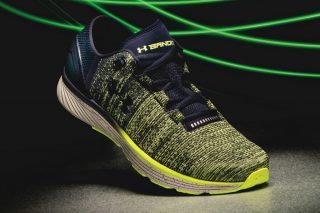
This fall’s running road shoe lineup is about as consistent as a pile of autumn leaves: varied with something for everyone. You can find anything from flyweight supple racers to sturdy and waterproof trail stompers. Some are bare-bones with zero drop. Others are thick and pillow-like. Here’s our take on the best of the season’s offerings.
RELATED: 10 Best Trail Running Shoes Of Fall 2017
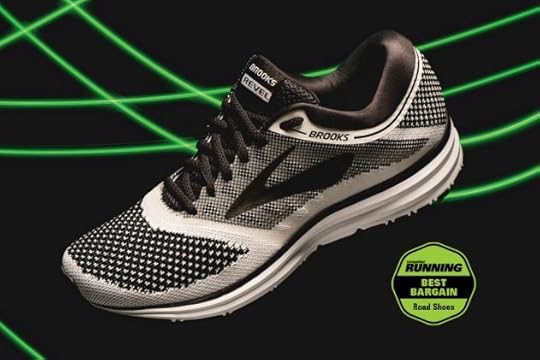
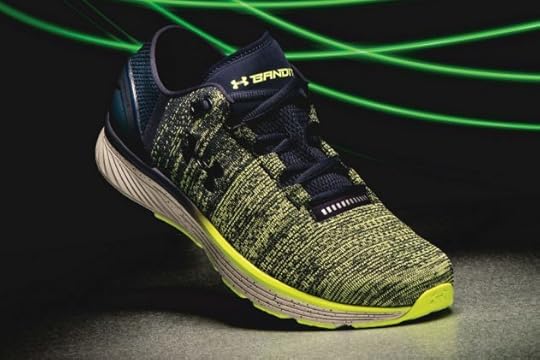
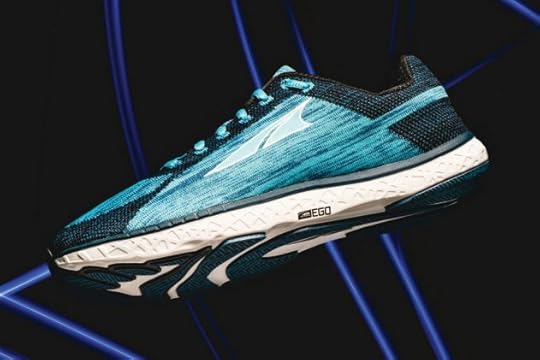
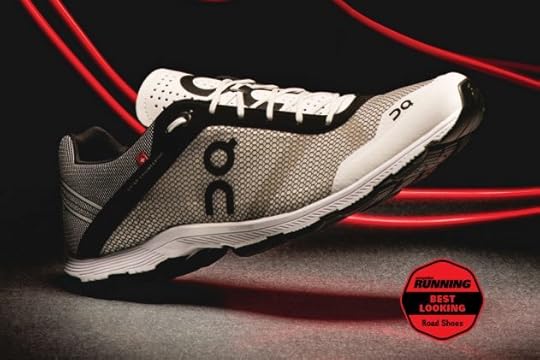
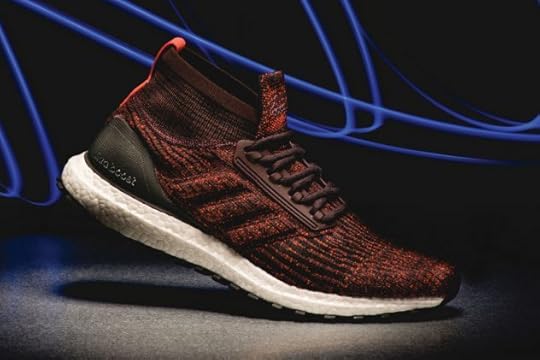
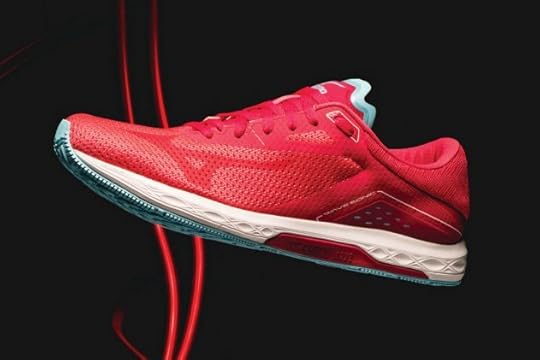
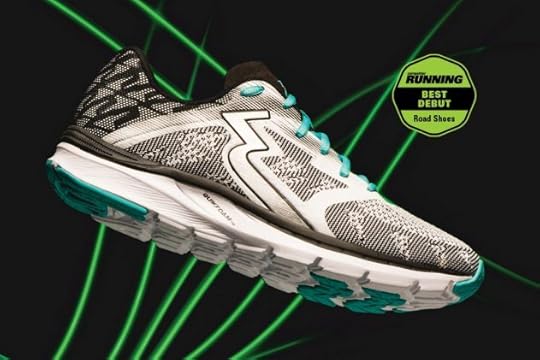
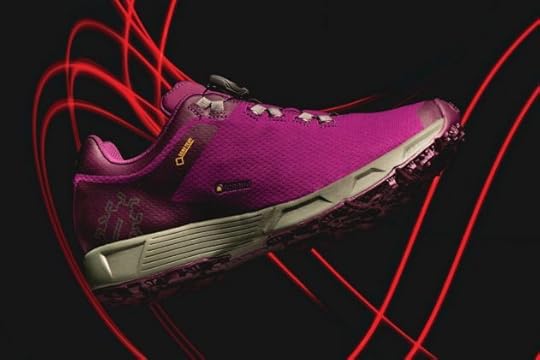
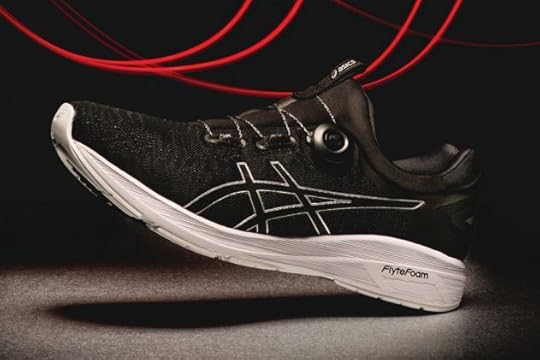
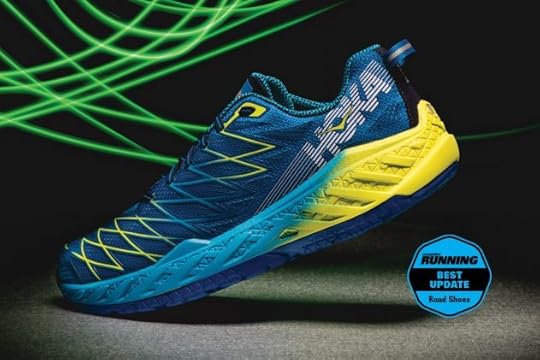
The post 10 Best Road Shoes To Take You From Fall To Winter Running appeared first on Competitor.com.
Ryan Hall's Blog
- Ryan Hall's profile
- 21 followers



